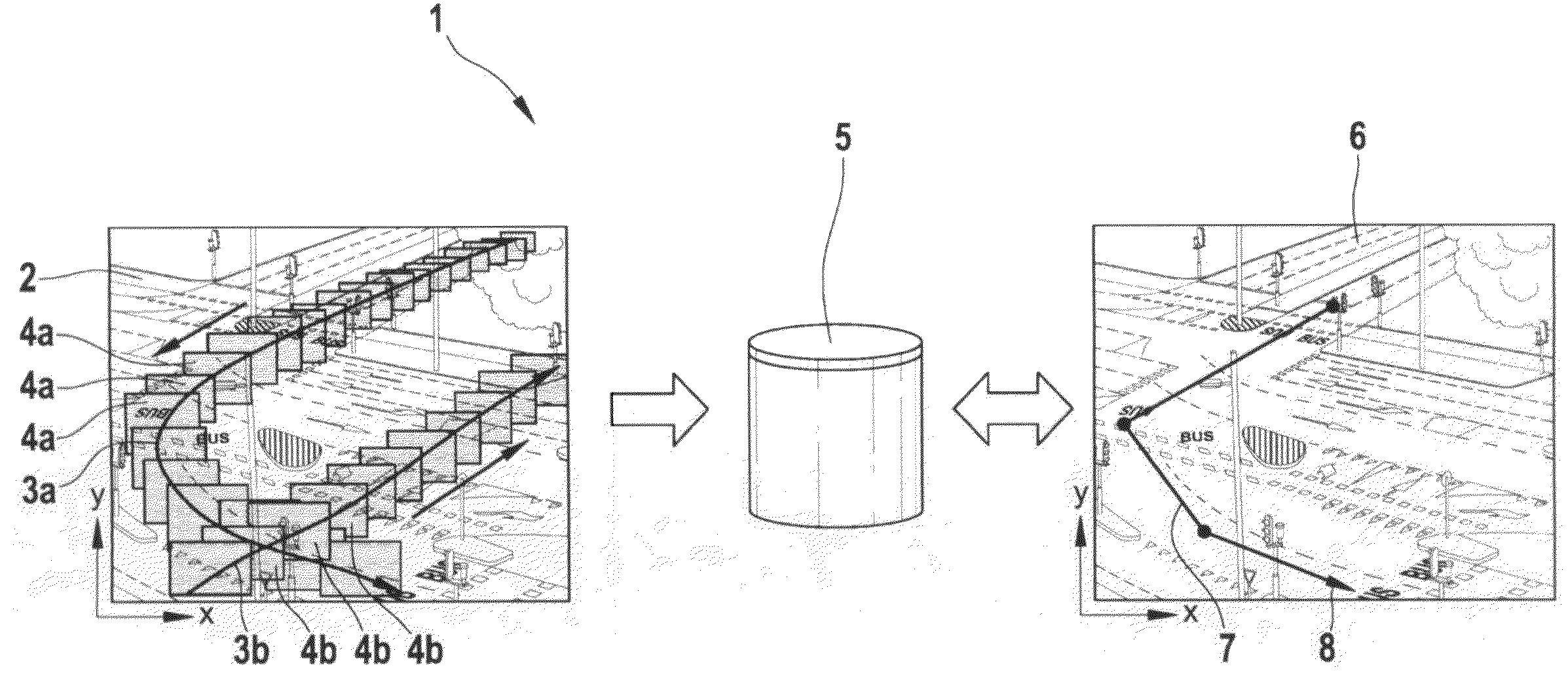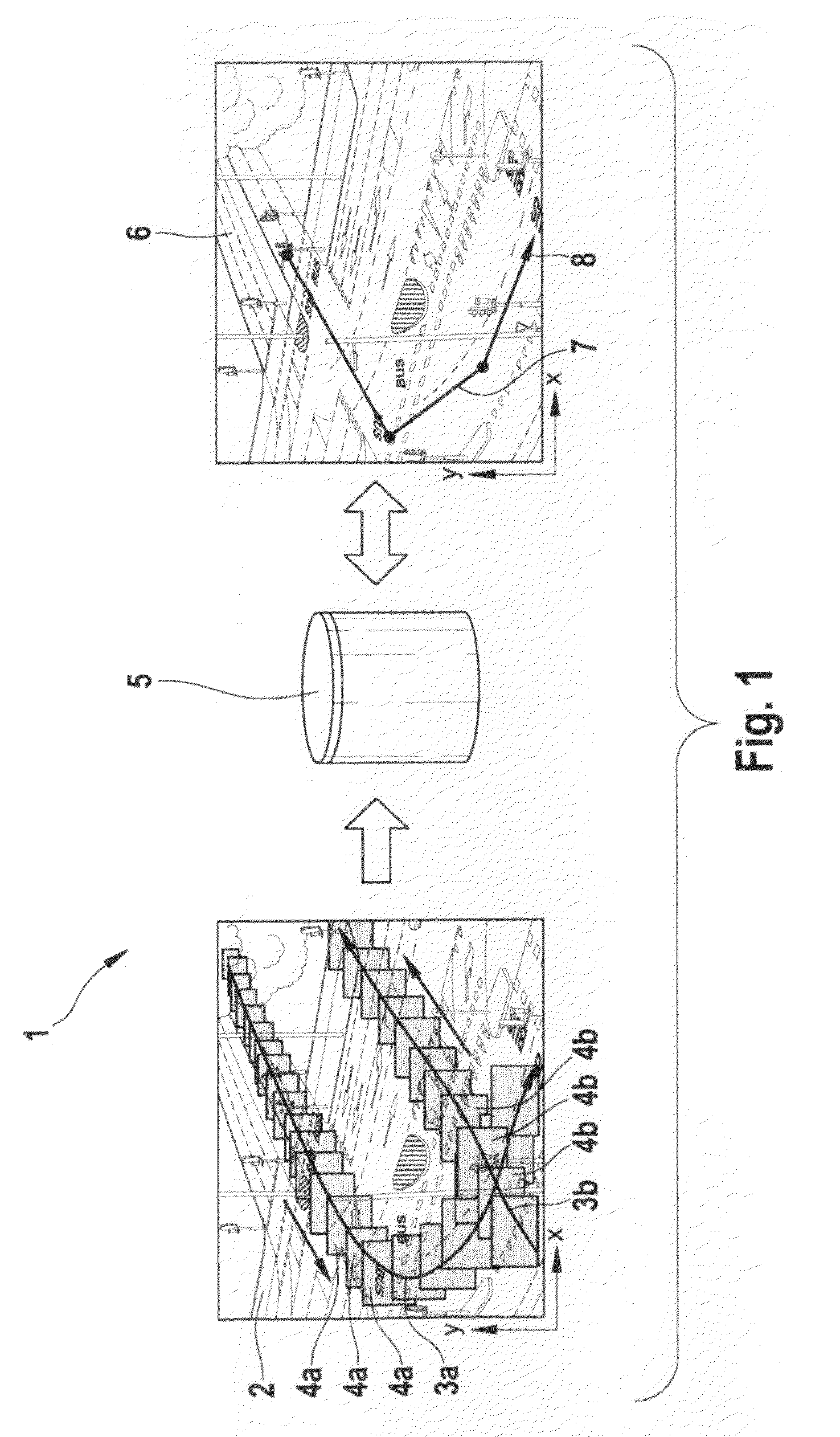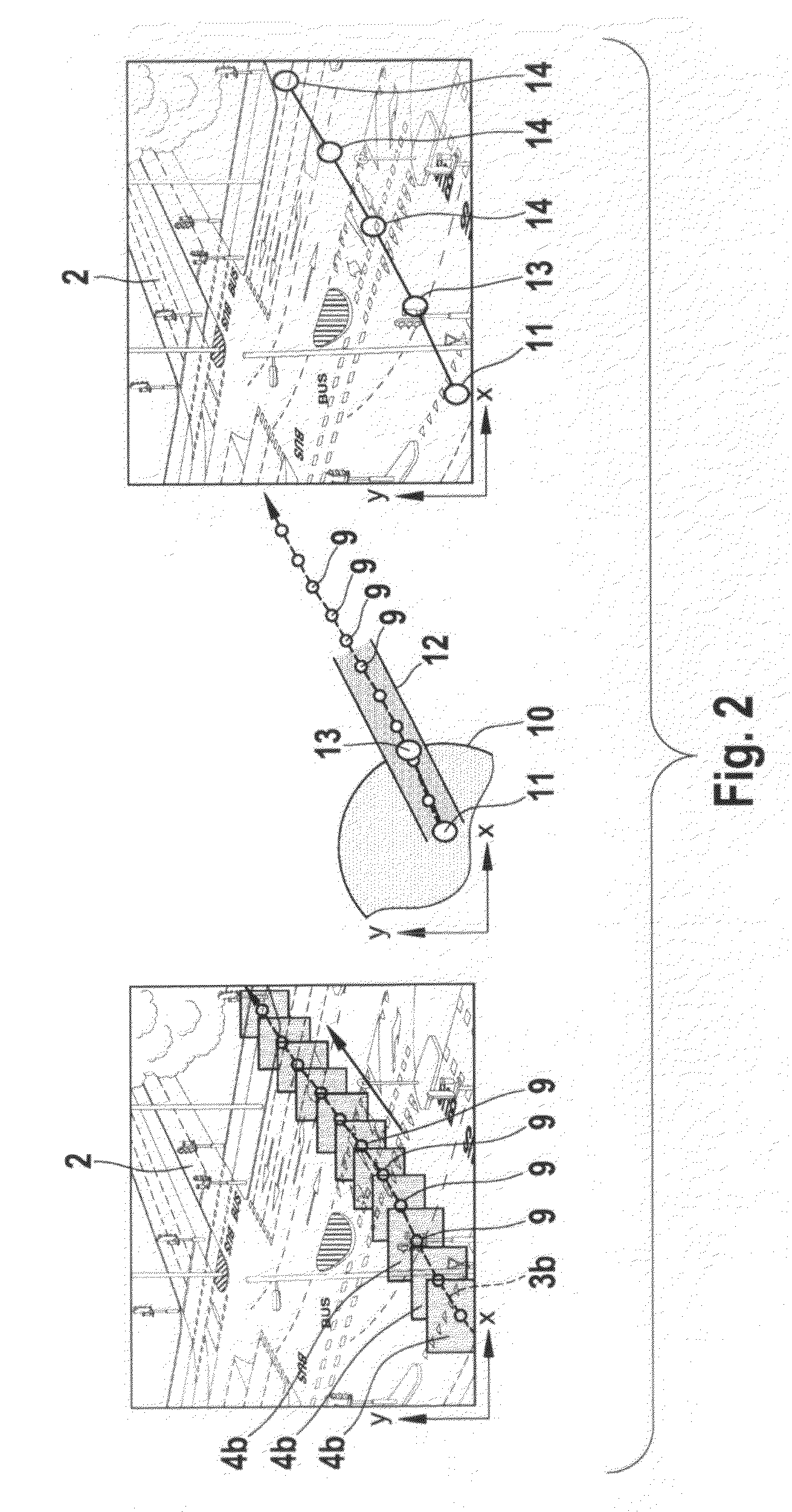Trajectory-based video retrieval system, and computer program
a video retrieval and trajectory technology, applied in the field of trajectory-based video retrieval system, can solve the problems of enormous effort to search through video data, increase the amount of stored video data, etc., and achieve the effect of faster retrieval of results and higher priority
- Summary
- Abstract
- Description
- Claims
- Application Information
AI Technical Summary
Benefits of technology
Problems solved by technology
Method used
Image
Examples
Embodiment Construction
[0032]FIG. 1 shows a schematic overview of the general concept of a video retrieval system 1. On the left hand side of FIG. 1 object tracking is illustrated by means of an image 2 of a traffic crossing with overlaid trajectories 3a and b and object detection windows 4a and 4b. In the image 2 two lines are shown representing two trajectories 3a and b of two different moving objects. The trajectories 3a and b are extracted from a sequence of video frames, whereby in a first step a segmentation and detection algorithm returned the shape and position of each of the moving objects and in a second step each moving object is tracked over its lifetime in the video sequence So the location points of the moving objects in the video frames are used to form the trajectories 3a, b, whereby the trajectories 3a and b are interpolating the centre (or another point) of the object detection windows 4a and 4b respectively, which are object bounding boxes on a frame-by-frame basis. These trajectories 3...
PUM
 Login to View More
Login to View More Abstract
Description
Claims
Application Information
 Login to View More
Login to View More - R&D
- Intellectual Property
- Life Sciences
- Materials
- Tech Scout
- Unparalleled Data Quality
- Higher Quality Content
- 60% Fewer Hallucinations
Browse by: Latest US Patents, China's latest patents, Technical Efficacy Thesaurus, Application Domain, Technology Topic, Popular Technical Reports.
© 2025 PatSnap. All rights reserved.Legal|Privacy policy|Modern Slavery Act Transparency Statement|Sitemap|About US| Contact US: help@patsnap.com



